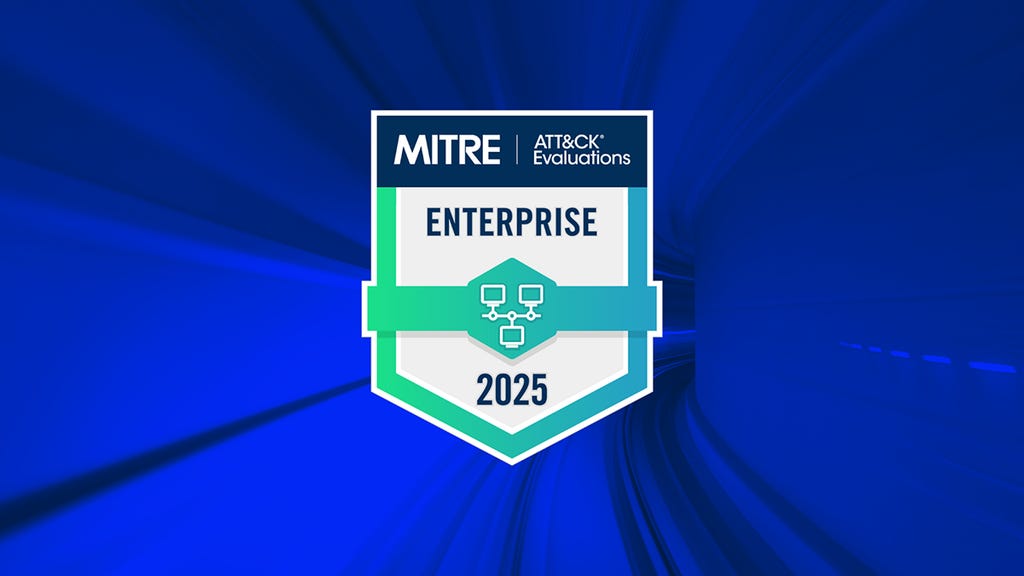
Qu’est-ce qu’un processus et un plan de réponse aux incidents ?

Un cyberincident peut nuire à l’image de marque, mais aussi entraîner des pertes de revenus et des sanctions pour non-conformité. Grâce à une compréhension claire de la réponse aux incidents, votre entreprise peut se protéger contre les cyberattaques et les violations des données.
Qu’est-ce que la réponse aux incidents ?
La réponse aux incidents fait référence au processus mis en place par votre entreprise pour gérer une cyberattaque ou une violation des données. Ce processus vous permet de résoudre un incident de sécurité et d’en tirer des enseignements susceptibles d’être utilisés pour éviter que des problèmes similaires ne se reproduisent.
Plusieurs éléments sont à prendre en compte dans le cadre de la recherche d’une réponse aux incidents pour votre organisation, notamment :
Planification de la réponse aux incidents
Vous pouvez élaborer un plan de réponse aux incidents pour définir les incidents et les mesures à prendre pour les atténuer. Ce plan décrit les responsabilités de votre équipe de réponse aux incidents et la façon de tenir vos parties prenantes informées jusqu’à la résolution de l’incident.
Services de réponse aux incidents
Les services de réponse aux incidents peuvent être utilisés pour détecter et répondre automatiquement aux cybermenaces. Ces services peuvent être déployés seuls ou en conjonction avec d’autres services de cybersécurité.
Analyse d’impact et priorisation des réponses
En priorisant la réponse aux incidents, vous pouvez anticiper les incidents de sécurité et en limiter l’impact. Vous pouvez aussi corriger les vulnérabilités de sécurité avant qu’elles ne conduisent à des cyberattaques et à des violations de données. De plus, vous pouvez utiliser votre plan et vos services de réponse aux incidents pour éviter les temps d’arrêt et maintenir vos opérations à des niveaux de pointe 24 h/24, 7 j/7 et 365 j/an.
Faut-il sous-traiter ou se doter d’une équipe interne ?
Vous pouvez employer une équipe interne de réponse aux incidents de sécurité, constituée de membres du personnel chargé de la cybersécurité et de l’informatique. Les membres de l’équipe connaissent les tenants et aboutissants de la cybersécurité et peuvent réagir aux incidents de sécurité.
Au lieu d’embaucher du personnel en interne, vous pouvez sinon vous associer à un fournisseur de services managés (MSP) qui propose des services de réponse aux incidents. Votre MSP pourra ainsi automatiser la façon dont votre entreprise réagit aux incidents de sécurité.
Comment identifier les incidents de sécurité
1. Utilisez les outils de surveillance des menaces
Un outil de surveillance des menaces vous tient informé des logiciels malveillants, des spams et autres attaques Web. Il recueille des données sur les cybermenaces, fournit des informations sur la sécurité et propose des conseils et des recommandations personnalisés en matière de réponse aux incidents
2. Effectuez des tests de pénétration
Les outils depen-test permettent de simuler un incident de cybersécurité et de rechercher les vulnérabilités de votre infrastructure informatique. Ce type de test peut vous aider à identifier et à corriger vos failles de sécurité avant qu’elles ne conduisent à des incidents.
3. Effectuez des analyses de vulnérabilité
Grâce à une analyse des vulnérabilités, vous pouvez évaluer et hiérarchiser les failles de sécurité dans l’ensemble de votre infrastructure informatique. Cette analyse indique les incidents auxquels vous avez été confronté et l’impact qu’ils ont eu sur votre entreprise.
4. Obtenez des notifications de la part des employés, des clients ou des tiers
Un employé ou un client peut vous informer des incidents de sécurité à mesure qu’ils se produisent. En outre, un MSP ou un autre éditeur tiers peut vous informer s’il traite de problèmes indiquant qu’une cyberattaque ou une violation de données est en cours. Il arrive parfois qu’un cybercriminel lance une attaque contre une entreprise, bloque l’accès à ses données et à ses systèmes et demande une rançon pour en rétablir l’accès.
Comment gérer un incident de cybersécurité
1. Répondez immédiatement
Planifiez à l’avance les incidents de sécurité. De cette façon, vous pourrez réagir instantanément au premier signe d’une cyberattaque ou d’une violation de données.
2. Confirmez la fin de l’incident
Réglez les incidents de sécurité, mais ne vous arrêtez pas là. Après avoir résolu un incident, étudiez le problème, découvrez pourquoi il s’est produit, analysez sa cause première et cherchez des moyens d’éviter que des situations similaires ne se reproduisent.
3. Surveillez votre infrastructure informatique
Utilisez des outils de sécurité qui vous permettront de recueillir des informations sur les tactiques, techniques et procédures des cybercriminels. Utilisez les renseignements sur les menaces pour mettre en contexte les cyberattaques et les violations de données.
4. Demandez de l’aide
Faites appel à expert en cybersécurité qui vous apprendra tout ce qu’il faut savoir en matière de réponse aux incidents.
Comment fonctionne un service de réponse aux incidents ?
Un service traditionnel de réponse aux incidents surveille vos utilisateurs finaux, vos postes et vos systèmes. Il recherche les anomalies de sécurité qui indiquent qu’une cyberattaque ou une violation de données a lieu. Lorsqu’il détecte une anomalie, il en informe votre équipe de réponse aux incidents ou les parties prenantes concernées. Si vous utilisez un service qui automatise la réponse aux incidents, ce dernier traitera l’incident seul.
Les services de réponse aux cyber-incidents sont souvent conçus conformément aux cadres de réponse aux incidents. Par conséquent, ils vous aident à vous conformer aux directives les plus récentes en matière de sécurité des données.
Il existe également des services de réponse aux cyber-incidents qui proposent une chasse proactive aux menaces, une analyse des menaces et d’autres fonctionnalités de sécurité.
Types de services de réponse aux cyber-incidents
1. Préparation et planification
Un spécialiste de la réponse aux incidents s’informera sur votre entreprise et sur les efforts qu’elle a déployés jusqu’à présent en matière de réponse aux incidents. Ensuite, il pourra vous aider à élaborer et à mettre à jour un plan et un programme de réponse aux incidents.
2. Surveillance des notifications de violation
Vous pouvez être averti dès qu’une cyberattaque ou une violation des données est découverte, puis décider des mesures à prendre pour remédier à l’incident.
3. Analyse numérique détaillée
Vous pouvez faire appel à un service d’analyses numériques pour examiner les preuves numériques relatives à une cyberattaque ou à une violation des données. Ce service vous aidera à comprendre ce qui s’est passé lors d’un incident de cybersécurité. Il fournira également des informations sur un incident et les mesures possibles à prendre pour améliorer votre posture de sécurité.
4. Service MDR (Managed Detection and Response)
Un service MDR digne de ce nom surveille automatiquement votre infrastructure IT, vous informe des incidents de sécurité et y répond. Il doit également fournir des renseignements sur les menaces.
Principales fonctionnalités des services de réponse aux incidents
1. Détection des menaces optimisée par l’IA
Ces services utilisent l’intelligence artificielle (IA) et le Machine Learning (ML) pour générer des informations de sécurité afin que vous puissiez comprendre parfaitement les incidents et comment vous protéger contre les cybermenaces.
2. Réponse proactive
Vous pouvez accéder à des renseignements sur les menaces pour détecter les indicateurs de compromission et arrêter automatiquement les incidents de sécurité.
3. Expertise en réponse aux incidents
Vous pouvez faire appel à des experts en réponse aux incidents afin qu’ils répondent à toutes vos questions et préoccupations en matière de cybersécurité.
4. Résultats supérieurs
Chaque chasse aux menaces, investigation et réponse doit être effectuée en fonction des besoins de votre entreprise, afin d’obtenir les meilleurs résultats possibles.
À propos des fournisseurs de services de sécurité managés
Le paysage actuel des menaces est en constante évolution et la réponse aux incidents se complexifie de jour en jour. Dans ces conditions, les renseignements sur les menaces sont essentiels. Pourtant, certains des MSSP les plus compétitifs se contentent encore de surveiller uniquement les systèmes de sécurité de leurs clients, ce qui expose de plus en plus ces derniers aux cyberattaques et aux atteintes à la protection des données.
En fin de compte, les meilleurs fournisseurs de services de sécurité managés se concentrent sur les résultats commerciaux de leurs clients. Chez Sophos, nous disposons d’une équipe d’experts en sécurité qui suivent les cybermenaces et empêchent les cyberattaques et les violations des données de se produire. Nos experts en sécurité font le nécessaire pour s’assurer que les entreprises peuvent sécuriser leurs opérations et tirer le meilleur parti de leurs investissements en matière de sécurité.
Sophos fournit :
- Aide à la configuration : nous configurons les solutions et veillons à ce qu’elles fournissent aux entreprises les résultats optimaux.
- Solutions personnalisées : nous utilisons les API Sophos pour produire des solutions personnalisées qui automatisent les tâches répétitives.
- Formation : nous formons le personnel informatique à l’utilisation de nos produits afin qu’il puisse optimiser la posture de sécurité de leur entreprise.
Pour nos experts, en matière de cybersécurité, il n’y a pas de « mauvaise » question. Si vous avez des questions, n’hésitez pas à nous contacter, nos experts se feront un plaisir d’y répondre.
Sophos MDR simplifie la réponse aux incidents
Les organisations ont la possibilité d’utiliser notre Cybersécurité as a Service pour répondre automatiquement aux incidents de sécurité ou les gérer comme bon leur semble.
Sophos MDR neutralise les incidents pour enrayer les cybermenaces. Notre équipe combine les technologies de sécurité des endpoints, des pare-feux et du cloud pour atténuer les menaces et assurer le bon fonctionnement de votre réseau.
Quelle est l’approche de Sophos en matière de réponse aux incidents ?
Le programme Sophos de réponse aux incidents est conçu pour traiter et gérer rapidement les incidents de sécurité afin de protéger les clients, les produits et l’entreprise. En se basant sur la définition globale des incidents de sécurité de la norme NIST 800-61, Sophos identifie les menaces à travers des contrôles, des tests et des analyses, suivis d’un processus d’investigation structuré visant à évaluer la gravité et à déterminer les mesures à prendre.
Pour en savoir plus sur notre approche approfondie en matière de réponse aux incidents et de solutions de réponse aux incidents, contactez-nous dès aujourd’hui.
Sujet connexe : Qu’est-ce qu’un fournisseur de services de cybersécurité ?
.svg?width=185&quality=80&format=auto&cache=true&immutable=true&cache-control=max-age%3D31536000)


.svg?width=13&quality=80&format=auto&cache=true&immutable=true&cache-control=max-age%3D31536000)



